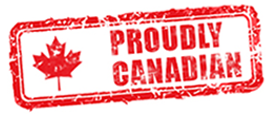The Pricing Debate
While 99% of sales training manuals do all they can to avoid the “pricing” topic, in reality, for the vast majority of sales people, price is always a factor.

So, rather than pretend it does not exit, let’s hit it head on.
Find a Real Pain:
If you dig deep to confirm a real pain (one they communicate … not you), then the price logically becomes less of a variable.
Focus on the Value:
Answer this question: how big is the problem I am solving? Then equate the price to that. If the need or problem is big, then how much it may cost to solve the need is less relevant!
Trial Pricing:
Sometimes giving budget ranges – even just through casual conversation – can help you get a feel for their response.
What do they Expect to Pay:
- First, be sure you are both comparing apples to apples.
- Who they buy from today will tell you what type of customer they are.
- If they have never bought this type of solution before, your job is to understand what they know or don’t know so you can educate them.
Don’t Assume Price is what’s Important:
Every day people buy things (business & personal) that are not the cheapest option. In fact most people do not buy solely on “price”. Ask questions to probe as to whether price is truly the only factor by digging to uncover their other “must haves”.
Example: By digging deeper, you can uncover that a customer’s key issue is cash flow … not the price.
This could enable you to offer financing or spread out payment terms
If they Don’t Like the Price Verbally … Why Quote?
Sometimes I see sales people communicate a price or price range verbally. Then, if the customer responses negatively, the sale person offers to “put it in writing” or “down on paper” as the next step. Why???? Do you think they will like the price better in writing?
Discounting:
Before you just discount, ask yourself … Why do they want a discount? Do they value your difference? Do they NEED it? Is price the real hurdle?
Modify the Solution:
Rather than discounting, an easy & more equitable way to lower your price is to remove features or aspects of your offering that they value the least. Everyone wins.
Walk Away:
Be prepared to simply tell your client if you cannot meet their price or lower further. If they let you walk away, then either they legitimately have a better price (for the same value) available elsewhere OR it was not really that important to them.
What Happens When Someone Wants the Price 1st?
Here is your process:
- Try to explain that providing a price without understanding their situation is unfair to both parties;
- If they still want the price, give them a range but do so via phone or face to face (not in an email). Why? So you can feel/see their reaction AND so you can put some “substance” around it.
- If they won’t meet to discuss the price (i.e. they just want you to send over the price in an email) you have no choice but to acquiesce but know your odds of showing your value are low.
When it comes to finding reliable partners in the Canadian market, Scott’s Directories is an invaluable resource. The direct...
Read MoreA Western Directory can significantly enhance your B2B marketing strategy. By leveraging detailed data, you can identify potential...
Read MoreFinding the right healthcare facility is crucial for quality care. The list of hospitals in Ontario provides an extensive director...
Read More























